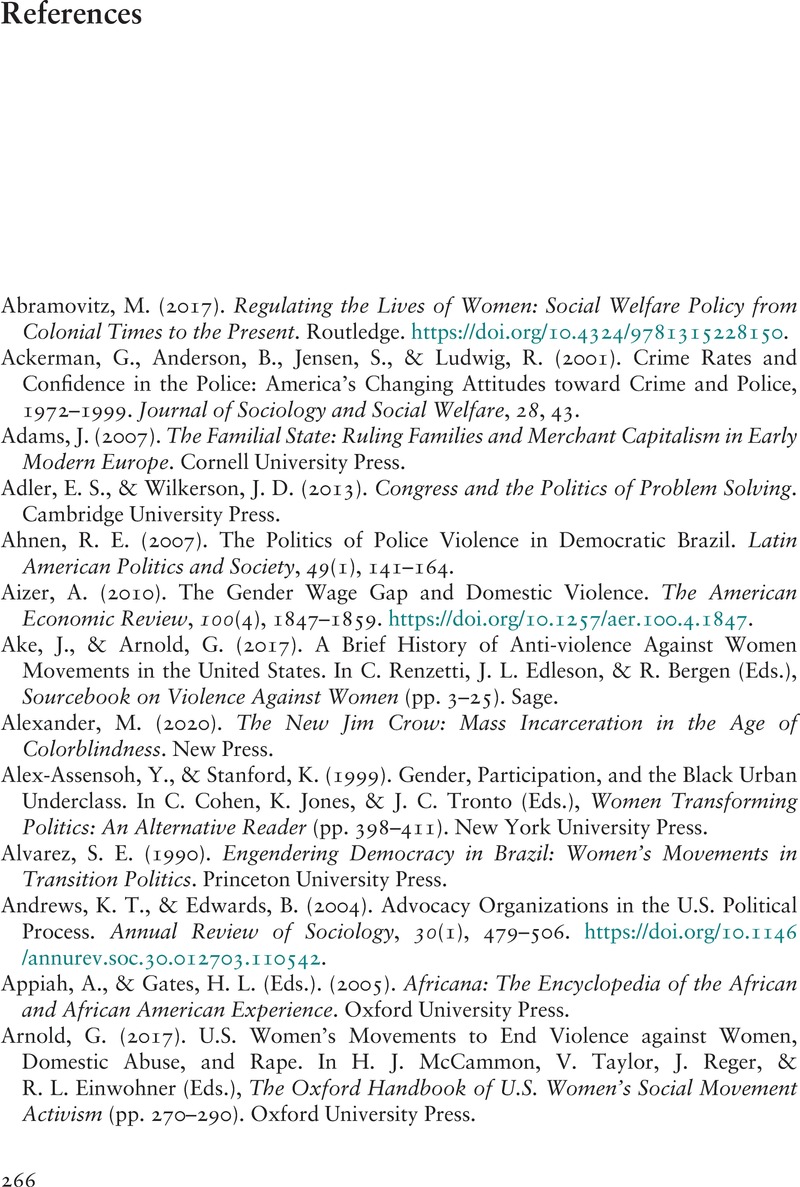Book contents
- Intersectional Advocacy
- Cambridge Studies in Gender and Politics
- Intersectional Advocacy
- Copyright page
- Dedication
- Epigraph
- Contents
- Figures
- Tables
- Acknowledgments
- Introduction Movements to End Gender-Based Violence and Rethinking Feminist Advocacy
- 1 Theory of Intersectional Advocacy
- 2 Setting the Policy Boundaries of the Violence Against Women Act
- 3 Reconfiguring the Violence Against Women Act
- 4 Policy Linkages and Organizational Strategy
- 5 Intersectional Advocates and Organizations
- 6 Mobilization and Intersectional Advocacy
- 7 The Challenges and Possibilities Ahead
- Book part
- References
- Index
- References
References
Published online by Cambridge University Press: 05 January 2024
- Intersectional Advocacy
- Cambridge Studies in Gender and Politics
- Intersectional Advocacy
- Copyright page
- Dedication
- Epigraph
- Contents
- Figures
- Tables
- Acknowledgments
- Introduction Movements to End Gender-Based Violence and Rethinking Feminist Advocacy
- 1 Theory of Intersectional Advocacy
- 2 Setting the Policy Boundaries of the Violence Against Women Act
- 3 Reconfiguring the Violence Against Women Act
- 4 Policy Linkages and Organizational Strategy
- 5 Intersectional Advocates and Organizations
- 6 Mobilization and Intersectional Advocacy
- 7 The Challenges and Possibilities Ahead
- Book part
- References
- Index
- References
Summary

- Type
- Chapter
- Information
- Intersectional AdvocacyRedrawing Policy Boundaries Around Gender, Race, and Class, pp. 266 - 289Publisher: Cambridge University PressPrint publication year: 2024



